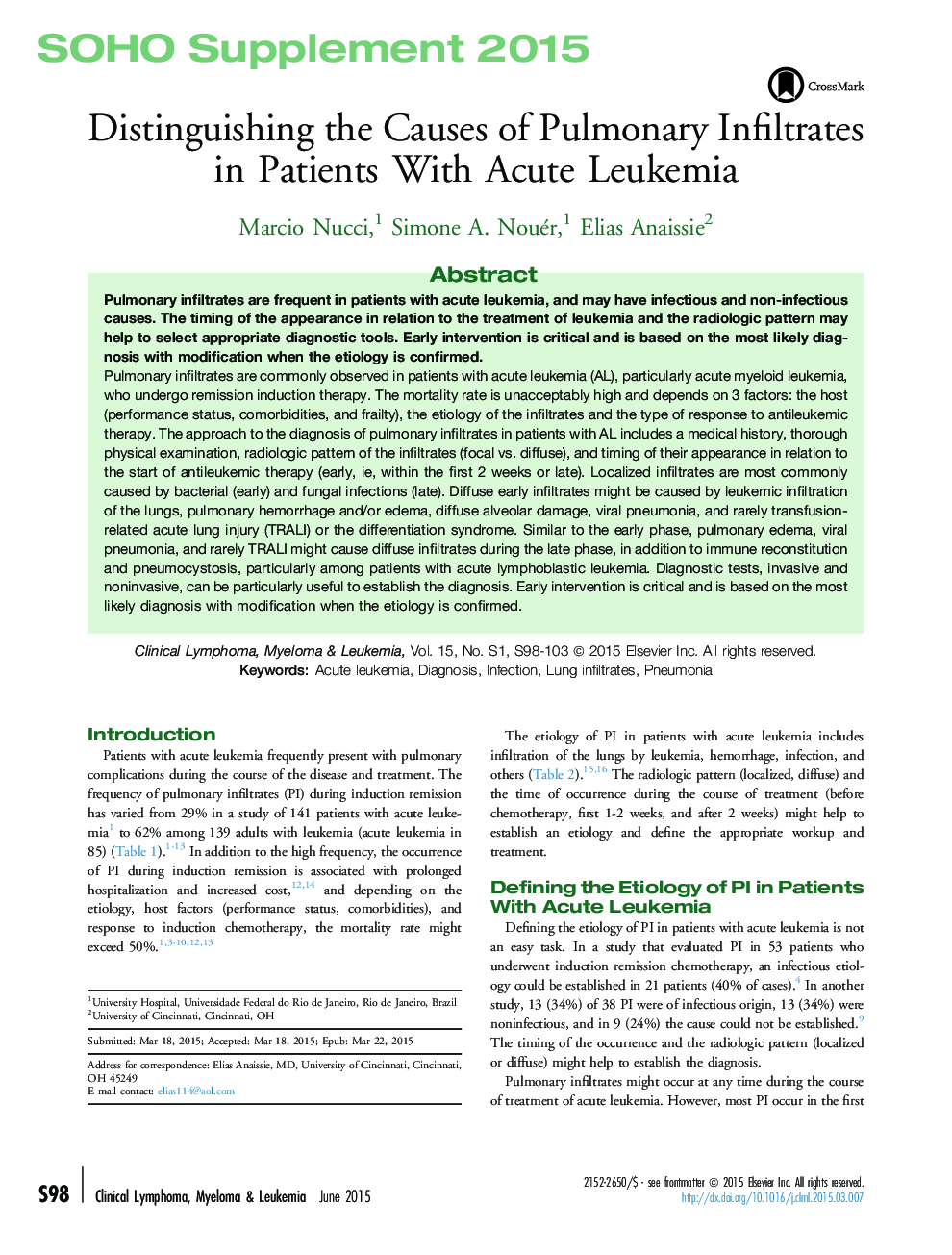| Article ID | Journal | Published Year | Pages | File Type |
|---|---|---|---|---|
| 5883071 | Clinical Lymphoma Myeloma and Leukemia | 2015 | 6 Pages |
Abstract
Pulmonary infiltrates are commonly observed in patients with acute leukemia (AL), particularly acute myeloid leukemia, who undergo remission induction therapy. The mortality rate is unacceptably high and depends on 3 factors: the host (performance status, comorbidities, and frailty), the etiology of the infiltrates and the type of response to antileukemic therapy. The approach to the diagnosis of pulmonary infiltrates in patients with AL includes a medical history, thorough physical examination, radiologic pattern of the infiltrates (focal vs. diffuse), and timing of their appearance in relation to the start of antileukemic therapy (early, ie, within the first 2 weeks or late). Localized infiltrates are most commonly caused by bacterial (early) and fungal infections (late). Diffuse early infiltrates might be caused by leukemic infiltration of the lungs, pulmonary hemorrhage and/or edema, diffuse alveolar damage, viral pneumonia, and rarely transfusion-related acute lung injury (TRALI) or the differentiation syndrome. Similar to the early phase, pulmonary edema, viral pneumonia, and rarely TRALI might cause diffuse infiltrates during the late phase, in addition to immune reconstitution and pneumocystosis, particularly among patients with acute lymphoblastic leukemia. Diagnostic tests, invasive and noninvasive, can be particularly useful to establish the diagnosis. Early intervention is critical and is based on the most likely diagnosis with modification when the etiology is confirmed.
Related Topics
Health Sciences
Medicine and Dentistry
Anesthesiology and Pain Medicine
Authors
Marcio Nucci, Simone A. Nouér, Elias Anaissie,
